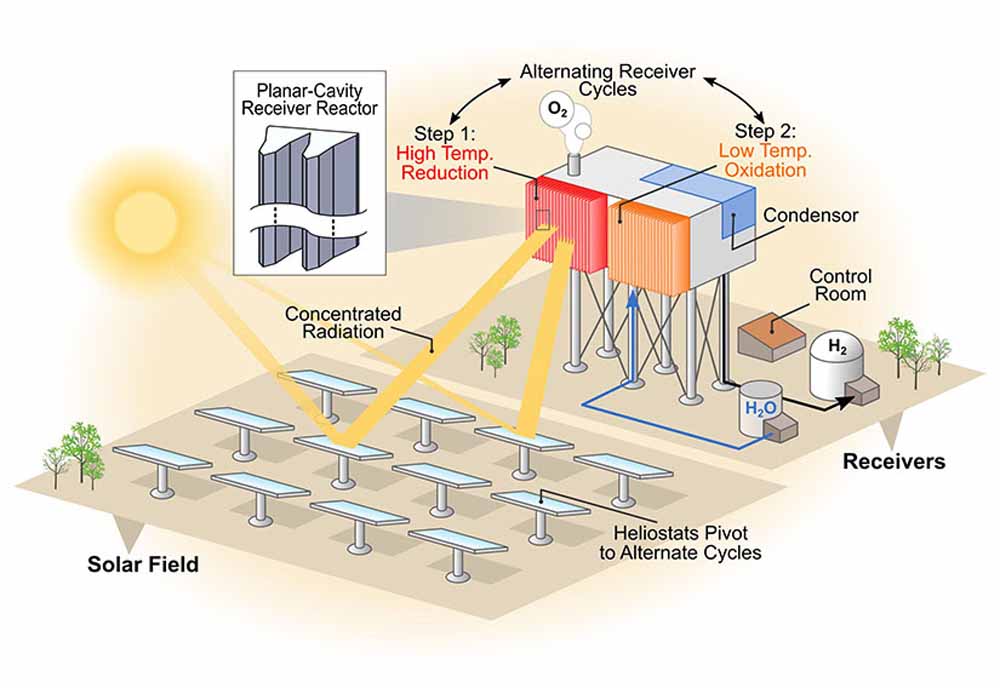From pv magazine USA
Hydrogen is increasingly the focus of research on using renewable resources for energy storage, especially in light of the Department of Energy’s Hydrogen Energy Earthshot, a goal to cut the cost of clean hydrogen by 80% to $1 per kilogram in a decade. With hydrogen from renewable energy currently at about $5 per kilogram, researchers are looking at many ways of cutting those costs.
At the National Renewable Energy Lab (NREL), researchers are looking at perovskite materials, which could be used in a process to produce hydrogen in a renewable manner. The focus of their study is an emerging water-splitting technology called solar thermochemical hydrogen (STCH) production, which can be potentially more energy efficient than producing hydrogen via the commonly used electrolysis method. The researchers evaluated the performance of various STCH materials in the context of a system platform to assess techno-economic benefits and what the challenges would be to scaling up STCH production.
“It’s certainly a very challenging field, and it has a lot of research questions still unanswered, mainly on the materials perspective,” said Zhiwen Ma, a senior engineer at NREL and lead author of a new paper, “System and Technoeconomic Analysis of Solar Thermochemical Hydrogen Production,” which appears in the journal Renewable Energy. His co-authors, all from NREL, are Patrick Davenport and Genevieve Saur.
The paper complements ongoing materials discovery research by examining how different materials may bring costs down. One of the challenges in the research was in identifying perovskites capable of handling the high temperatures required while hitting performance targets. Another challenge is that in STCH, the PV cells used only capture a part of the solar spectrum, and STCH uses the entire spectrum. Research to identify the best materials for STCH is critical to the success of this method for hydrogen production, the scientists noted.
“The material has not necessarily been found,” Saur said, “but this analysis is to provide some boundaries for where we think the costs will be if the materials meet some of the targets and expectations that the research community envisions.”
This content is protected by copyright and may not be reused. If you want to cooperate with us and would like to reuse some of our content, please contact: editors@pv-magazine.com.




1 comment
By submitting this form you agree to pv magazine using your data for the purposes of publishing your comment.
Your personal data will only be disclosed or otherwise transmitted to third parties for the purposes of spam filtering or if this is necessary for technical maintenance of the website. Any other transfer to third parties will not take place unless this is justified on the basis of applicable data protection regulations or if pv magazine is legally obliged to do so.
You may revoke this consent at any time with effect for the future, in which case your personal data will be deleted immediately. Otherwise, your data will be deleted if pv magazine has processed your request or the purpose of data storage is fulfilled.
Further information on data privacy can be found in our Data Protection Policy.